The History and Appeal of Excelsior Park, a High-Precision Watch Brand
If you want to know more about the charm and history of Excelsior Park in the video, please click here ↓
In today's article, I will explain about the brand "Excelsior Park," which most people are probably not familiar with or interested in.
Basically, when it comes to watches, the most important thing is the brand name, followed by the appearance, and then the movement, which is just a supplement.
And Excelsior Park was a company with strengths in that last movement.
However, movement companies have the technical expertise, and even though the movement is something that cannot be seen, its design is a work of art.

The table of contents is as follows:
1. History of Excelsior Park
2. Change of company name and unification to Excelsior brand
3. Providing Excelsior Park movements to other companies
4. Relationship between Zenith and Excelsior Park
5. Excelsior Park as a military watch
6. Bankruptcy due to the Quartz Crisis
Finally, here is a summary.
So let's get started right away.
History of Excelsior Park
Excelsior Park was a large watch company founded in 1866 by a man named Jeanneret, and was one of the leading companies in the field of stopwatches and chronographs.

In 1888, Jeanneret's three sons took over the business, with the eldest, Albert, taking over as representative.
In 1891, he patented the pocket watch chronograph, which he developed in collaboration with Alfred Lugrin.
Alfred Legrand was the founder of what is now Manufacture Breguet and what was then called Lemania.
If you want to know more about Lemania, please watch this video:
In this way, the company Excelsior Park originally had enough technological capabilities to obtain a patent.
Change of company name and unification to Excelsior brand
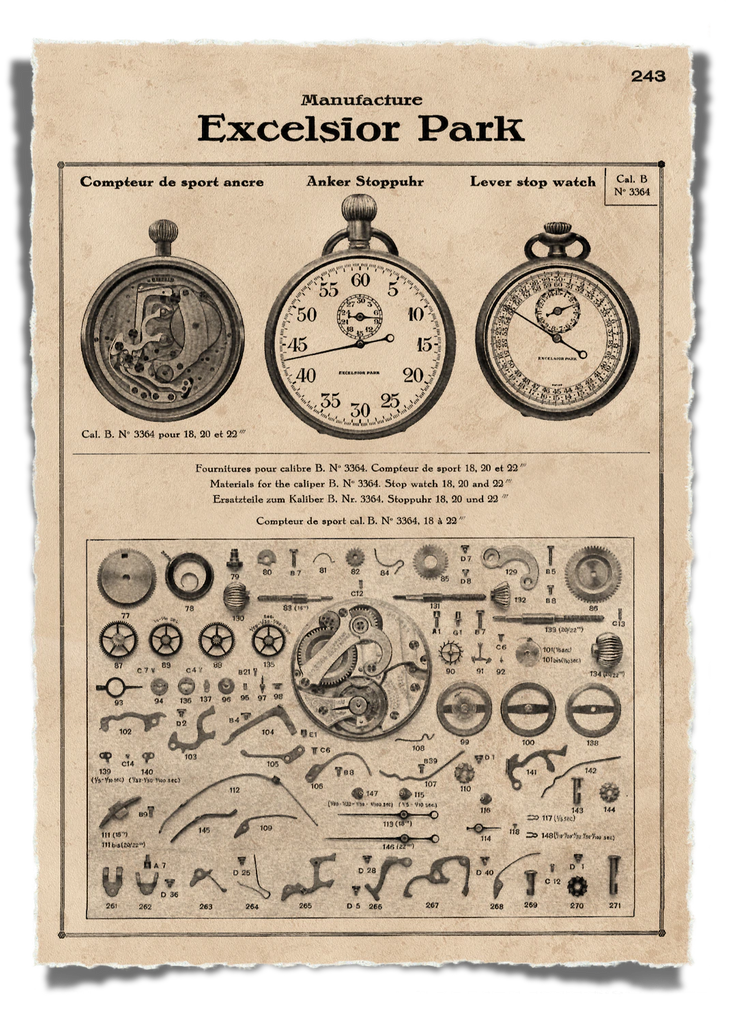
In 1894, the company changed its name to Jeanneret Brothers & Co. (Jeanneret-Brehm and Co.) and began developing sporty watches that were slightly different in style from those that had come before.
-Chronometer model under the Excelsior brand
・Chronograph branded by Colombe
・Repeat customers with the brand Risou
And so it unfolded.
In 1915, the company began using the Excelsior brand for repeater and chronograph watches, and in 1918 the company name was changed to Les Fils de Jeanneret-Brehm, Excelsior Park.
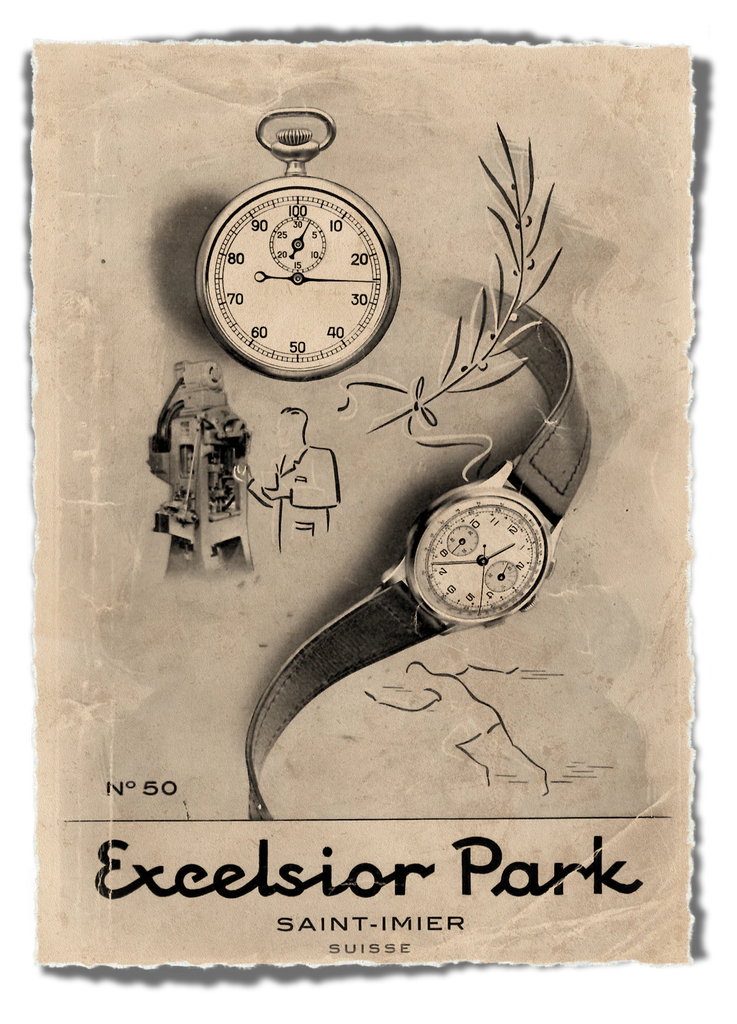
Thus, the name Excelsior was originally used for the chronometer brand line, but the "Park" part was later added in order to unify everything under Excelsior and market it in English-speaking markets.
The pronunciation "park" is familiar to people in English-speaking countries, so it was thought that it would be easy to recognize.
In the early 1920s, under the direction of RH and ED Jeanneret, Excelsior Park focused specifically on chronometer models and chronographs.
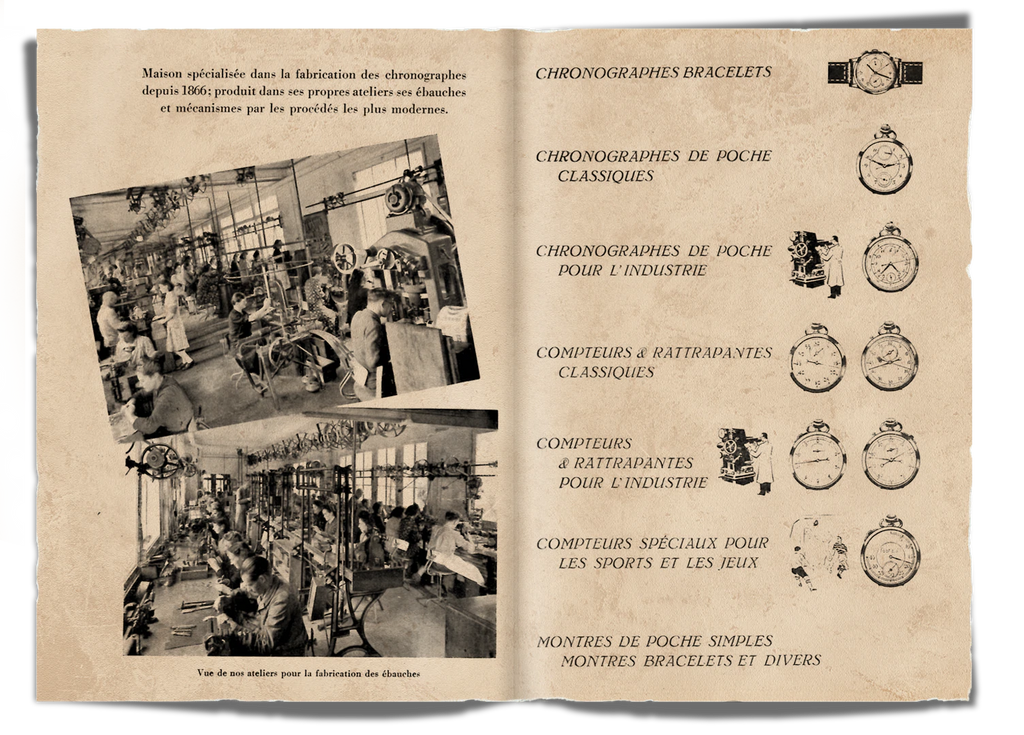
In 1922, Excelsior Park launched a wide range of stopwatches, with 32 different models.
This stopwatch was used in a variety of sports, including football, rugby, hockey, water polo and boxing.
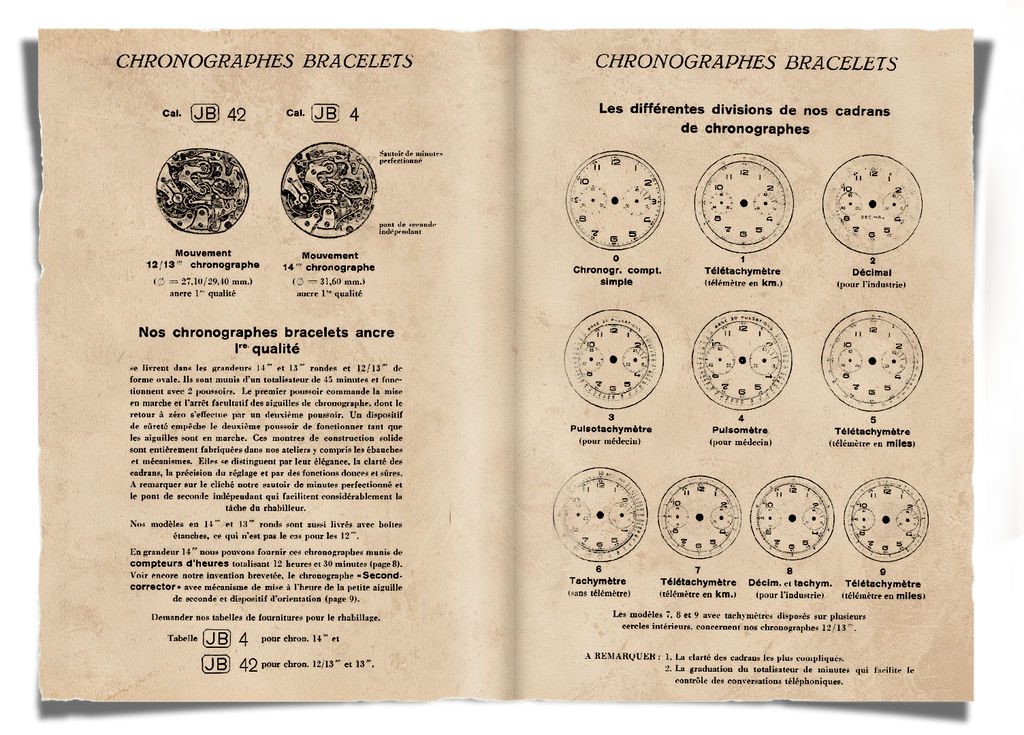
These highly accurate Excelsior Park watches were used in a variety of situations, and by 1928 the company had grown to become one of Switzerland's leading chronometer and chronograph manufacturers.
The product range was further expanded to include stopwatches for canoeing and motorsports, decimal stopwatches, and stopwatches that could measure to within 1/100th of a second using a hand that completed one rotation per second.
The following year, a new series of chronographs was released, increasing the lineup from 18 to 22 models.
Looking at the history of Excelsior Park, we can see that it was a brand with considerable technical capabilities even back in the days of stopwatches.
Now let's take a look at what position it has established in the wristwatch market.
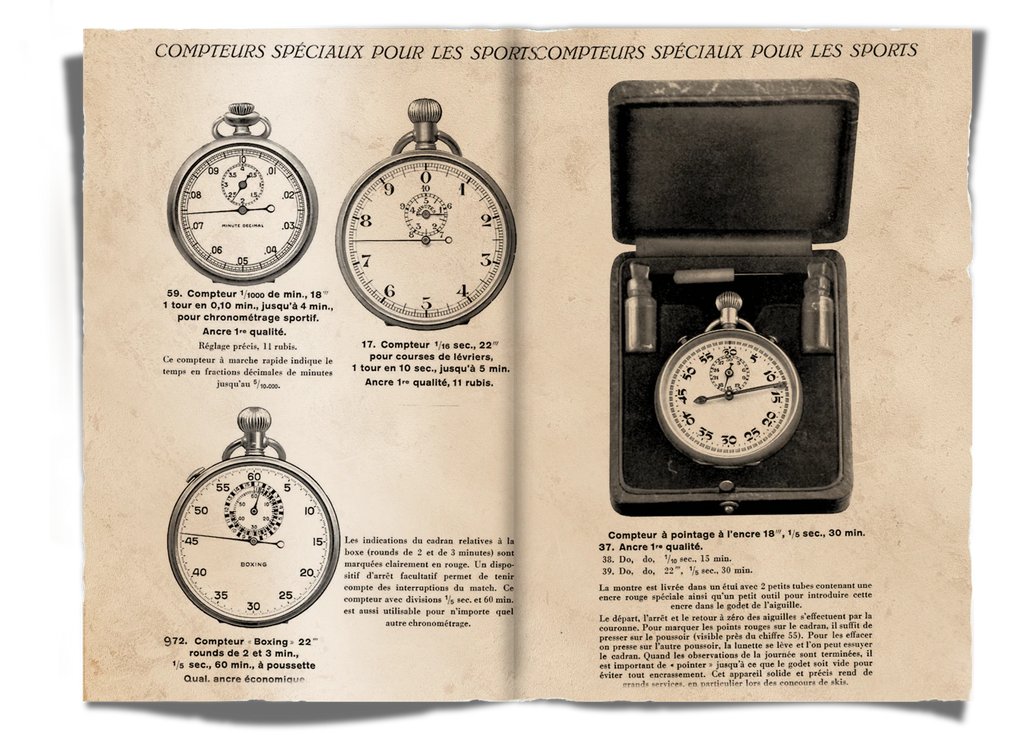
In the 1930s, chronographs for athletes became increasingly popular, and Excelsior Park was so successful in this field that it began developing its own calibers.
The year 1938 marked a major turning point for the company .
This was the year that the company began to seriously develop chronographs for wristwatches.
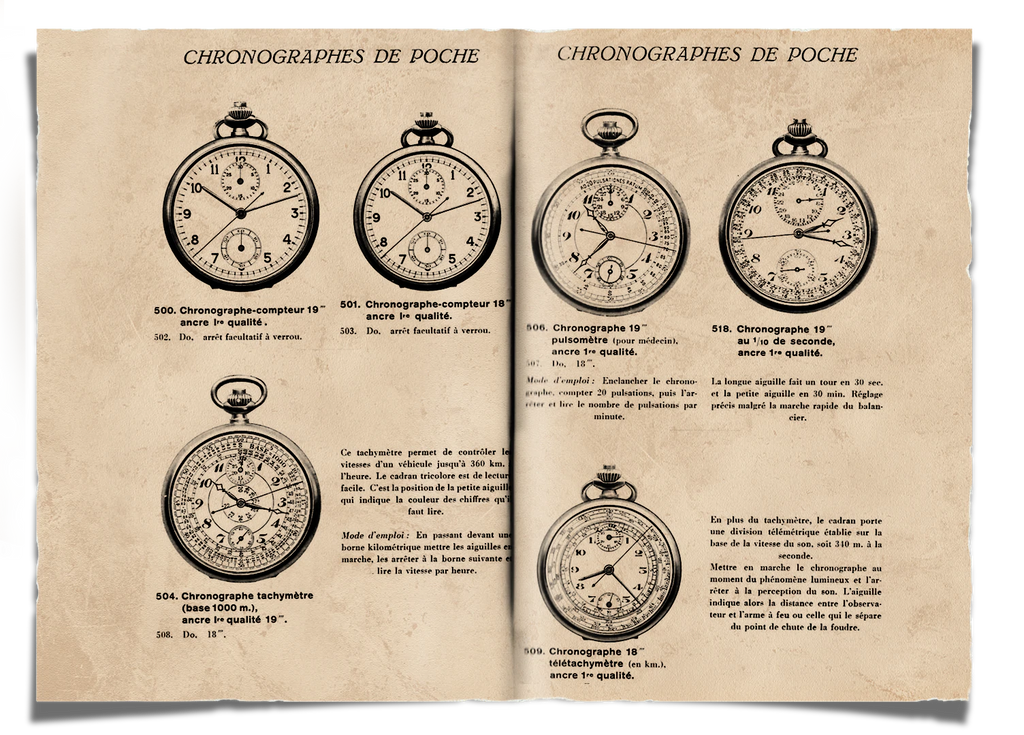
This movement was originally called 12/13, but was later renamed Cal.42.
Initially, there were only one or two buttons and the timer could only measure up to 30 or 45 minutes.
Although the Excelsior Park is a small and elegant chronograph, a new feature has been added to make the scale counters slanted to make the dial easier to read.
This patented invention makes it easy to turn, for example, a telemeter into a tachymeter and a tachymeter into a pulse meter.
Providing Excelsior Park movements to other companies
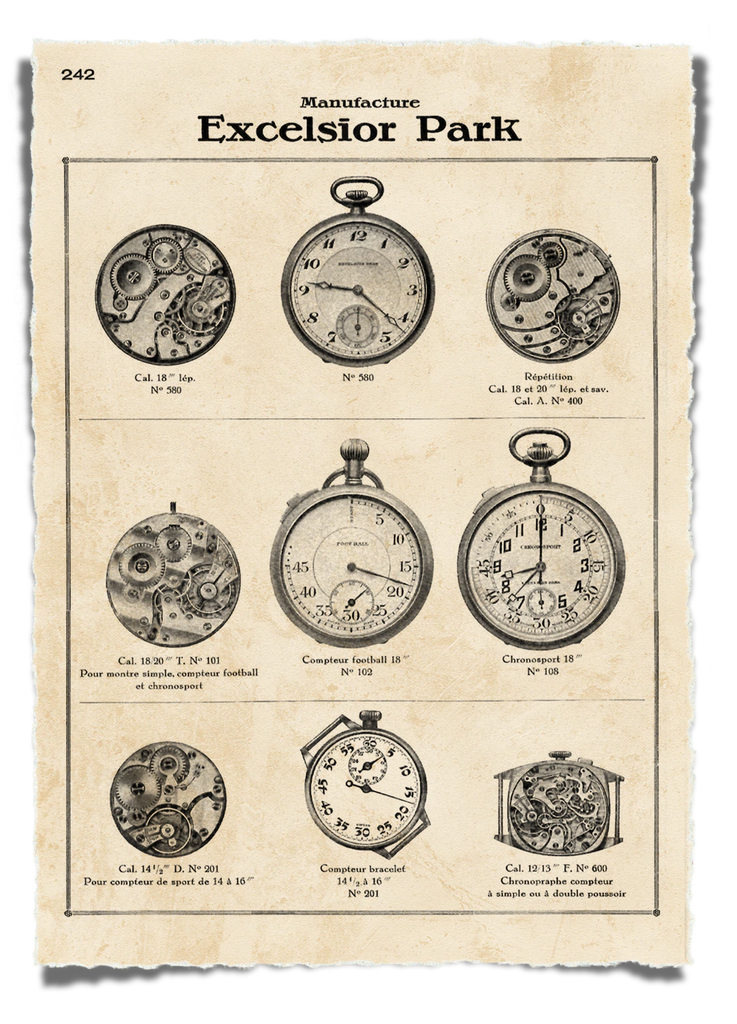
The success and numerous awards the Excelsior Park has won has not only demonstrated its reputation for using in-house calibers.
Due to its high level of accuracy, Excelsior Park also supplied chronograph movements to other companies' watches, such as Gallet, Zenith, and Girard-Perregaux.
One of the main brands that uses the Excelsior Park Cal. 42 movement is Garrett.
That's why Garrett and Excelsior Park have nearly identical clocks.
That's Garrett's pet name, "Commander."
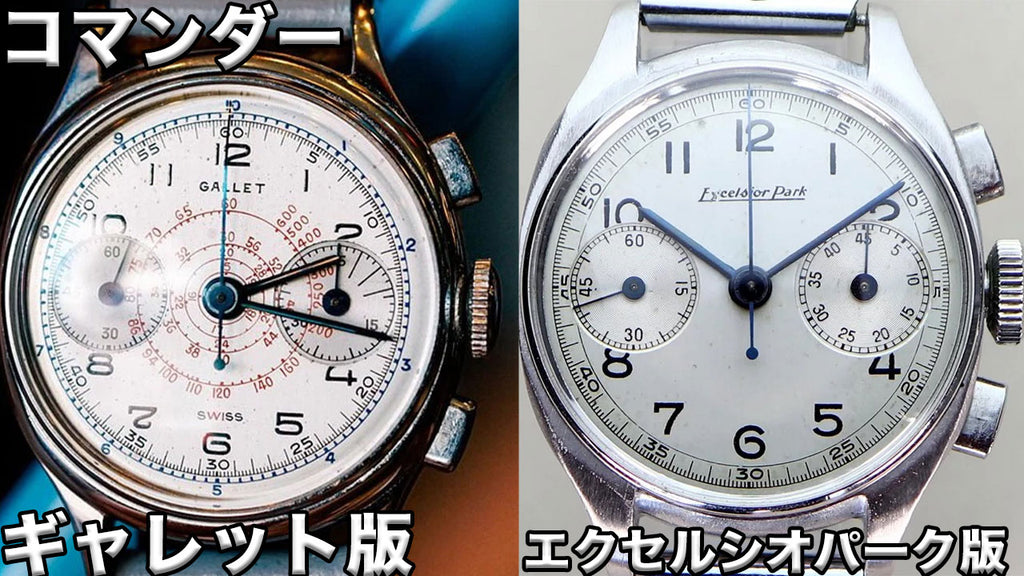
For more information about Garrett's history, click here.
Later, Excelsior Park released the successor to Cal.4, the Cal.40, and this movement also went on to be adopted by various brands.
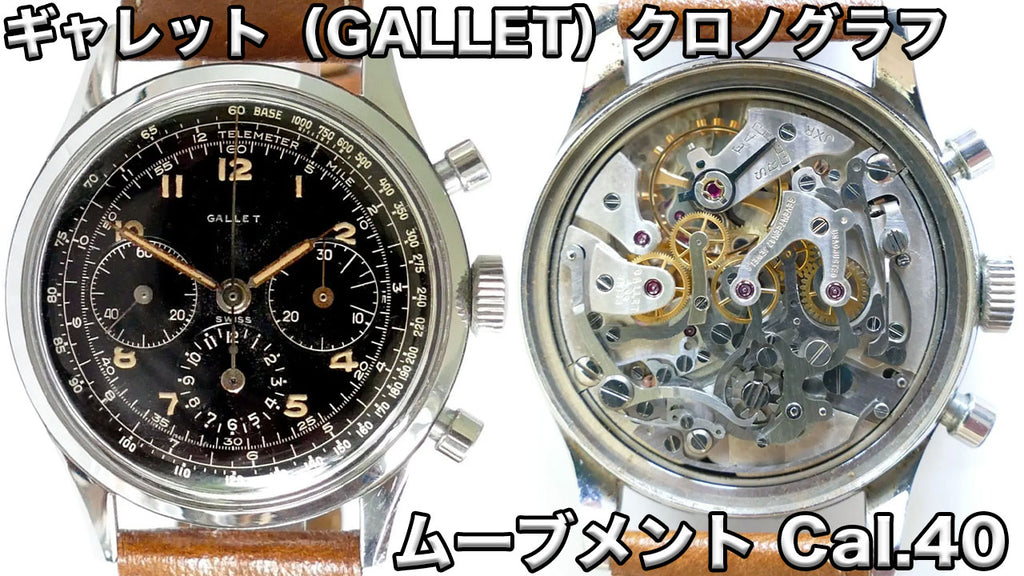
30 minute counter at 3 o'clock
12 hour counter at 6 o'clock
Small seconds at 9 o'clock
is laid out.
Most of the remaining models today are Garrett branded, but they were also used by lesser known brands such as Excelsior Park, ZINN, and Certina.
Zenith and Excelsior Park
In the 1930s, Zenith became the largest watch manufacturer in Switzerland.
Zenith has developed a wide range of pocket watches and wristwatches with traditional design and exquisite craftsmanship, and has been awarded six pocket chronometers and boat chronometers.
At the competition at the Neuchâtel Observatory in 1935, Zenith's exhibit included travel watches, alarm clocks and electronic watches.
But there was no chronograph among them.
At the time, Zenith relied on the Excelsior Park, and the first wristwatch chronograph that Zenith released in 1938 was equipped with the Excelsior Park Cal. 42.
For nearly 30 years, Zenith has been supplied with chronograph movements by Excelsior Park.
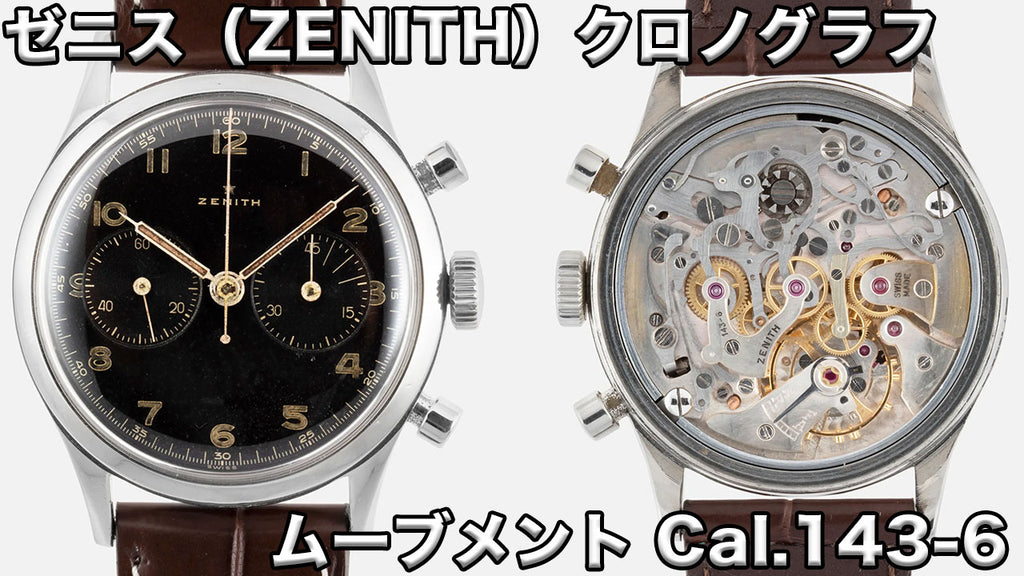
This watch is equipped with the Cal. 143-6, a movement that Zenith refined from the Cal. 4 that was later supplied by Excelsior Park.
As you know, Zenith began receiving movements from Movado at some point, and as a result of this closer relationship, the El Primero was completed.
If you want to know more about the history of Movado, click here.
Excelsior Park as a military watch
It is natural for movement manufacturers to produce strong movements that are generally adopted for military use.
This is true for Lemania, Movado, and Valjoux.
And of course, the Excelsior Park was also adopted as a military watch.
It was adopted by the Swedish and Japanese armies.
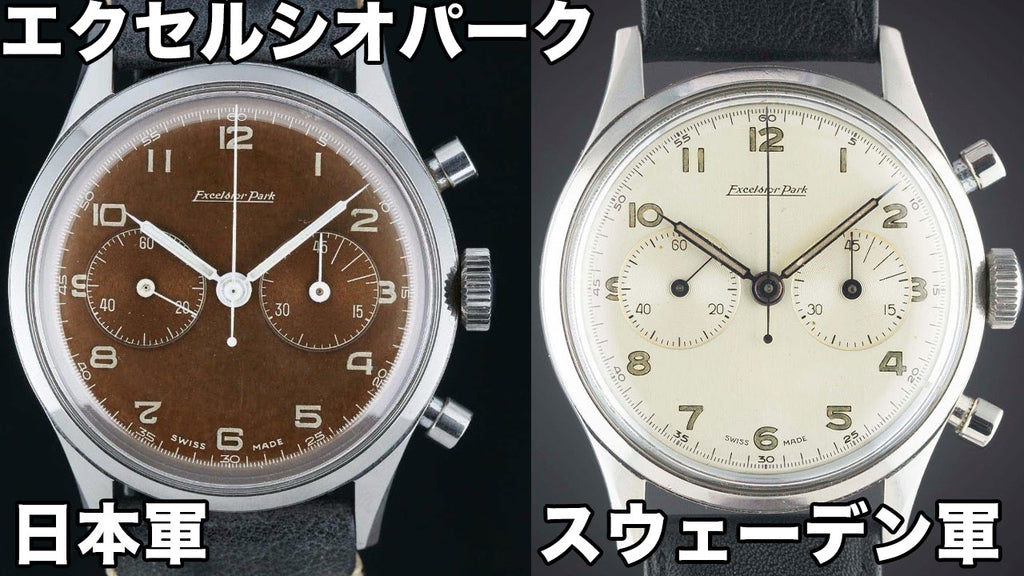
Both watches are equipped with the two-register Cal. 4 that I introduced earlier, and they have a refined beauty.

The Swedish military version has the Swedish coat of arms, three crowns, engraved on the case back.
For more information on Swedish military watches, please see this video:

The Swedish military watches were delivered with white dials, while the Japanese military watches were delivered with black dials (which have turned brown over time).
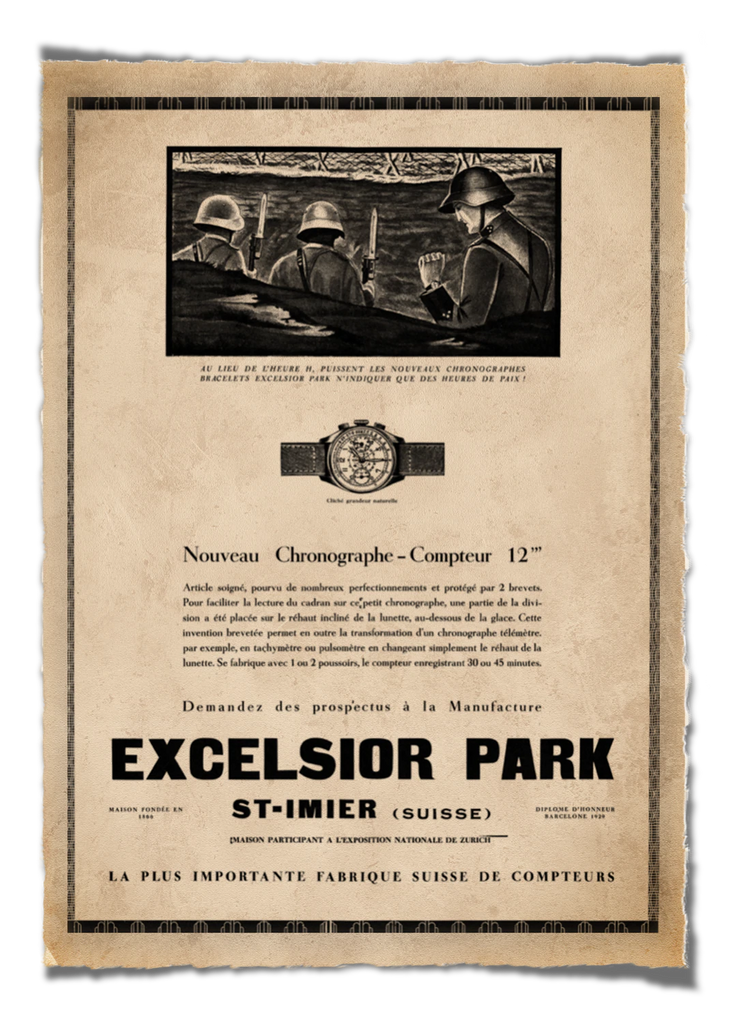
Bankruptcy due to the Quartz Crisis
Excelsior Park continued to make chronographs and chronometers until the 1970s, with the company still led by a descendant of the founder.
However, Excelsior Park could not withstand the harsh conditions of the quartz crisis of the 1970s, and went bankrupt in 1984, bringing it to an end.
In an attempt to revive Excelsior Park, a German company called Fume, which supplied the tools needed to make watches, acquired the rights to the name in 1986 and produced a very small number of chronographs using the Excelsior Park name.
But unfortunately, this didn't last long.
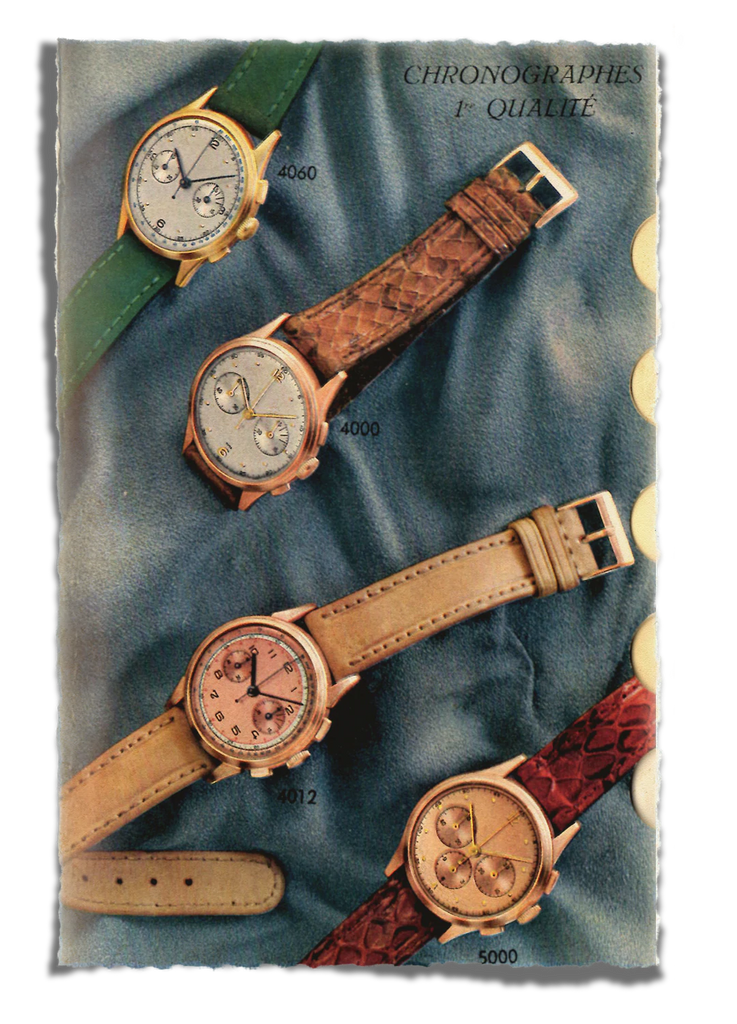
summary
A comparable movement from the time would be the Longines 13ZN, but both of these were high-end, complex movements with a fourth-wheel bridge design , and both were expensive to manufacture.
I think the reason why the Excelsior Park remains popular among enthusiasts, including myself, is due to the quality of its elaborate movement.
In short, it's not just the appearance of the watch that makes it valuable - the movement alone is enough to make it valuable.
That's why Excelsior Park's movements were adopted by so many different companies.
Furthermore, there are surprisingly few Excelsior Park watches that bear the company's own name, and those with the Excelsior Park name are extremely rare.
Although it is now a defunct and forgotten brand, its technical capabilities were genuine, and I believe that if its true value is recognized once again, the Excelsior Park from the 1900s will once again attract attention.



